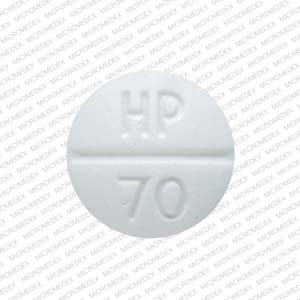Methimazole Dosage
Medically reviewed by Drugs.com. Last updated on Aug 4, 2025.
Applies to the following strengths: 5 mg; 10 mg; 15 mg; 20 mg
Usual Adult Dose for:
Usual Pediatric Dose for:
Additional dosage information:
Usual Adult Dose for Hyperthyroidism
Initial dose:
Mild hyperthyroidism: 15 mg orally per day
Moderately severe hyperthyroidism: 30 to 40 mg orally per day
Severe hyperthyroidism: 60 mg orally per day
Maintenance dose:
5 to 15 mg orally per day
Comments: Daily doses are usually given in 3 divided doses at approximately 8 hour intervals
Uses:
- For the treatment of Graves' disease with hyperthyroidism or toxic multinodular goiter in whom surgery or radioactive iodine therapy is not an appropriate treatment option.
- To ameliorate symptoms of hyperthyroidism in preparation for thyroidectomy or radioactive iodine therapy.
Usual Pediatric Dose for Hyperthyroidism
Initial dose: 0.4 mg/kg orally per day
Maintenance dose: 0.2 mg/kg orally per day (approximately half the initial dose)
Comments: Daily doses are usually given in 3 divided doses at approximately 8 hour intervals
Renal Dose Adjustments
Data not available
Liver Dose Adjustments
Data not available
Dose Adjustments
An elevated TSH, during periodic monitoring of thyroid function, should lead to a decrease in the dosage of methimazole.
Precautions
CONTRAINDICATIONS:
- Hypersensitivity to the active substance or any product excipients
Consult WARNINGS section for additional precautions.
Dialysis
Data not available
Other Comments
Administration advice:
- Take orally in equally divided doses at approximately 8-hour intervals
General:
- Patients treated with this drug should be under close surveillance due to the potential for serious adverse effects.
- Avoid use during the first trimester of pregnancy due to reports of fetal abnormalities; after the first trimester it may be preferable to switch to methimazole due to hepatotoxicity of propylthiouracil.
Monitoring:
- Routine monitoring of TSH and free T4 levels is necessary to avoid under or over treatment
- Consider monitoring prothrombin time if there are concerns of bleeding; prothrombin time should be monitored before surgical procedures
- Obtain complete blood counts if there are signs and symptoms of agranulocytosis
- Perform liver function testing if there are any symptoms of hepatic dysfunction
Patient advice:
- Patients should understand the importance of contacting their healthcare provider promptly if they experience any signs or symptoms of liver dysfunction, low blood counts, bleeding, or vasculitis.
- Women should be instructed to speak to their healthcare provider if they are pregnant or plan to become pregnant.
Frequently asked questions
More about methimazole
- Check interactions
- Compare alternatives
- Pricing & coupons
- Reviews (114)
- Drug images
- Side effects
- During pregnancy
- Support group
- Drug class: antithyroid agents
- Breastfeeding
- En español
Patient resources
Other brands
Professional resources
Other brands
Related treatment guides
See also:
Further information
Always consult your healthcare provider to ensure the information displayed on this page applies to your personal circumstances.


